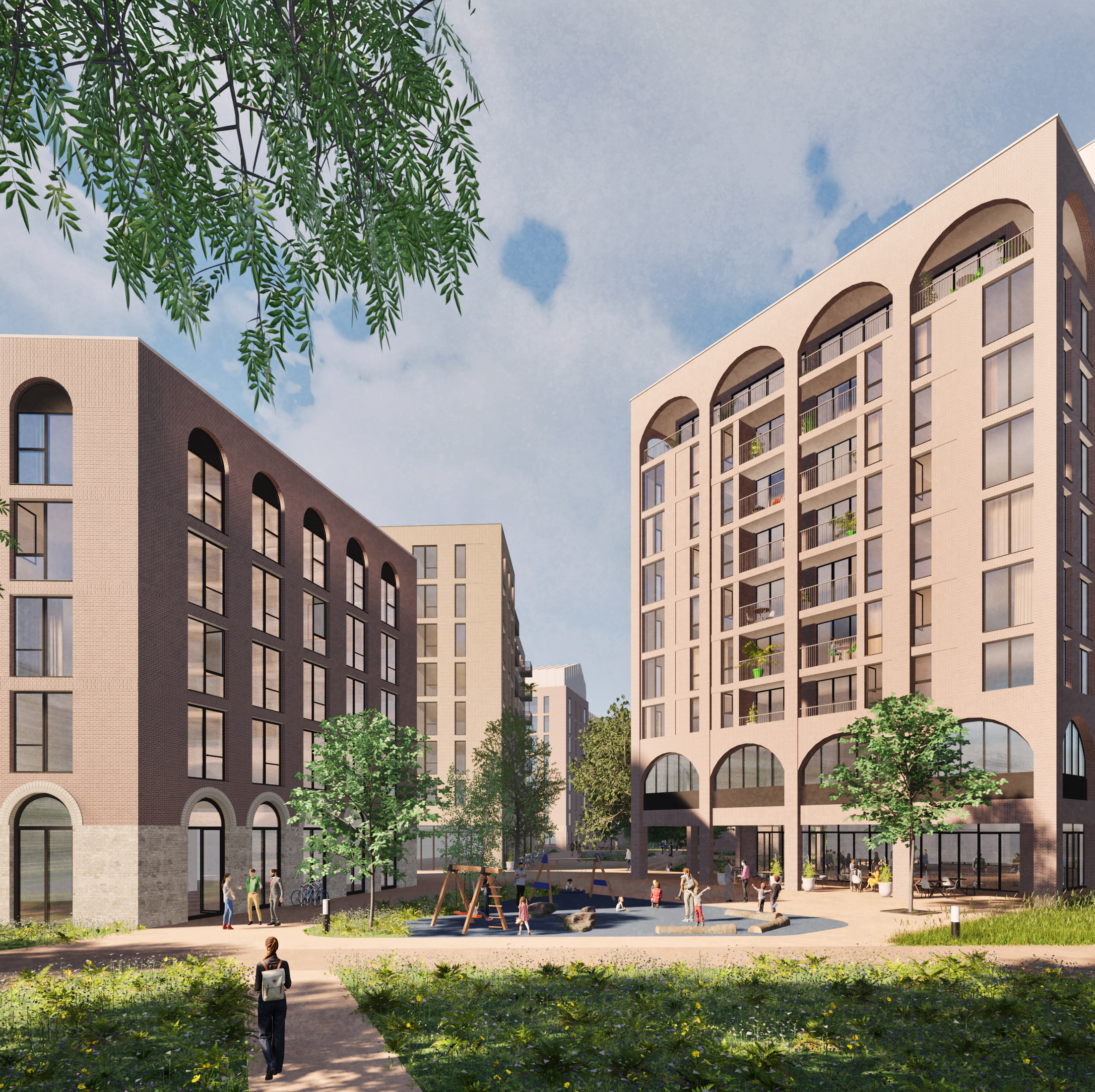NEW NEIGHBOURHOOD
Addressing Bristol’s housing crisis
Bristol is facing a housing crisis with a severe shortage of homes to rent or buy. This has caused house prices to rise significantly, with rents increasing by 85% in the last ten years, making it harder for locals to buy their first home.
We’re proposing up to 1,600 new homes, including affordable housing, helping to meet Bristol’s urgent housing needs. Our vision is to create an inclusive, connected neighbourhood with varied street layouts, building types, and active frontages, fostering a lively, welcoming community.
Designing a sustainable environment
The development will feature a green spine linking to the Bristol and Bath Railway Path, combining homes, shops, public spaces, and inviting outdoor areas, all designed with attractive, varied architecture.
Connecting with the community
The design will reflect the unique character and heritage of Fishponds and Hillfields
Varied housing types
A range of homes, commercial spaces, and public facilities will create a lively and diverse area.
Lively street fronts
Buildings will have active ground floors with large windows, outdoor seating, and high-quality public spaces to encourage social interaction.
Varied building heights
Most buildings will be 3-8 storeys, with a mix of heights and roof designs to enhance visual appeal, maximise natural light, and create a comfortable, welcoming atmosphere.
Green spaces for all
Rooftop gardens and ground-level public spaces will offer places to relax, play, and socialise.
Balanced sunlight
Thoughtful building design will ensure public areas and nearby homes get sufficient sunlight.
Creating a well-balanced neighbourhood
Our plans reflect the ambition of the Atlas Place Framework and the Council’s growth vision for regeneration and density in the area. We will make the best use of space while designing a neighbourhood that feels welcoming and sustainable.
Higher-density development unlocks major investment for Fishponds and Hillfields, funding new community infrastructure and public realm and green spaces.
A smart approach to density
With limited land for new housing, it’s important to build efficiently. The Atlas Place Framework carefully balances density across three development sites, ensuring a mix of housing types and green spaces.
Timber Mills will play a key role in this vision, delivering a well-designed, higher-density neighbourhood at 260 homes per hectare. While this may seem high in isolation, it forms part of a broader plan that creates a diverse and well-balanced community.
Building for the future
Fishponds currently has mostly lower-density housing (30-40 homes per hectare), which increases car dependency, congestion, and limits public transport options. To create better-connected communities, Bristol City Council is planning for new developments with around 100 homes per hectare—helping to improve transport links and support local services.
Why higher-density, well-planned developments work
- Maximising brownfield land – Supports regeneration in Fishponds and Hillfields while freeing up space for parks, community hubs, and recreational areas.
- Enhanced community services & facilities – Higher density supports the viability of local shops, healthcare, schools, and cultural spaces, ensuring better access to essential services for residents.
- Better sustainability – Compact, energy-efficient buildings reduce urban sprawl and environmental impact.
- Improved transport & mobility – Higher density encourages walking, cycling, and public transport use, reducing car dependency.
How Timber Mills delivers balanced density
- A gradual transition – The design moves from medium-density homes (50-80 homes per hectare) near existing residential areas to mid-rise apartments (80-200 homes per hectare) at the heart of the community.
- A walkable neighbourhood – Homes will be within easy reach of amenities, public transport, and cycle routes, making everyday life more convenient.
- Diverse housing options – A mix of terraced houses, courtyard homes, mansion blocks, and mixed-use buildings ensures variety without relying on high-rises.
- Smart land use – Reduced private car parking makes room for green spaces, communal courtyards, and rooftop gardens.
Tell us what you think:
How could communal spaces be designed to meet the needs of both current and future residents?

